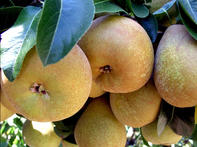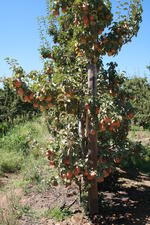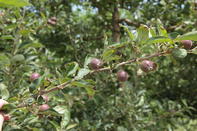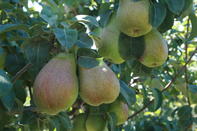Pears have been produced for thousands of years and were even referred to as “a gift of gods” in Homer’s Odyssey. The genus consists of about twenty species of which half are found in Europe, North Africa and Asia Minor, and the other half in Asia.

These have given rise to two groups of domesticated pears, the soft-fleshed European Pyrus communis and the crisp-flesh Asiatic pears, principally Pyrus pyrifoli.
Pear consumption has traditionally trailed behind apple consumption, due to difficulties supplying the market with nice ripe pears. Production has however become much more sophisticated and standardised over the past few years, resulting in more consistent quality.
Global Production
China is the biggest producer and exporter of pears, accounting for more than 70% of the world’s total production and 18% of exports in 2018, as seen on Tridge. Argentina, the United States and Italy are the three biggest producers after China. Argentina accounts for a mere 3.3%; the United States only 2.7% and Italy just 2.6% of the world’s total production.
The Netherlands, Argentina and South Africa were the three biggest exporters after China in 2018, with the Netherlands accounting for 14%, Argentina accounting for 13.7% and South Africa accounting for 10.4% of the total exports.
South African Production

Pears were brought to South Africa by the Dutch East India Company under the command of Jan van Riebeeck. In a letter dated 19 April 1665, Van Riebeeck wrote that the Cape weather was not so good for vegetable production the previous year, but “the wine was successful” and “…thirty apples were picked from six trees and two pears”.
One of the original saffron trees planted in Van Riebeeck’s time was still growing in the Company’s Garden in 2019. To keep the heritage alive, the City of Cape Town’s Parks Department together with Tru-Cape produced a clone of this tree and then planted the new sapling next to the parent tree in 2015.
Industry Body

Pome fruit producers in South Africa are represented by Hortgro Pome, which was previously known as the South African Apple and Pear Producers Association. The body was established in the early 1970s to promote and protect the interest of apple growers, and later, also those of the pear growers.
Research Breakthrough

A major breakthrough for the industry came with the development of the Forelle Early Market Access Programme (FEMA), for which Dr Ian Crouch won the Hortgro Researcher of the Year award in 2015. Forelle pears before then had been a production headache. It was astringent when picked too early and prone to mealiness when picked too late.
To overcome this problem, Dr Ian suggested Forelle pears be treated like apples. So instead of picking the pears early, they are left on the trees for two to three weeks longer, resulting in riper, sweeter fruit at harvest. Further ripening is prevented after the harvest through the application of the growth inhibitor, 1-methylcylopropene (MCP), which has been commercially available in the country as SmartFreshSM since 2002.
The programme has saved the industry hundreds of millions of rands and allowed farmers to export FEMA pears up to nine weeks earlier than normal protocol pears. The programme has also unlocked new market opportunities for farmers by introducing a whole new pear eating experience, moving from ‘soft and juicy’ to ‘crisp and sweet’. This is in high demand in the Middle East and some European countries.
For bulk or export enquiries please use the enquiry link below.